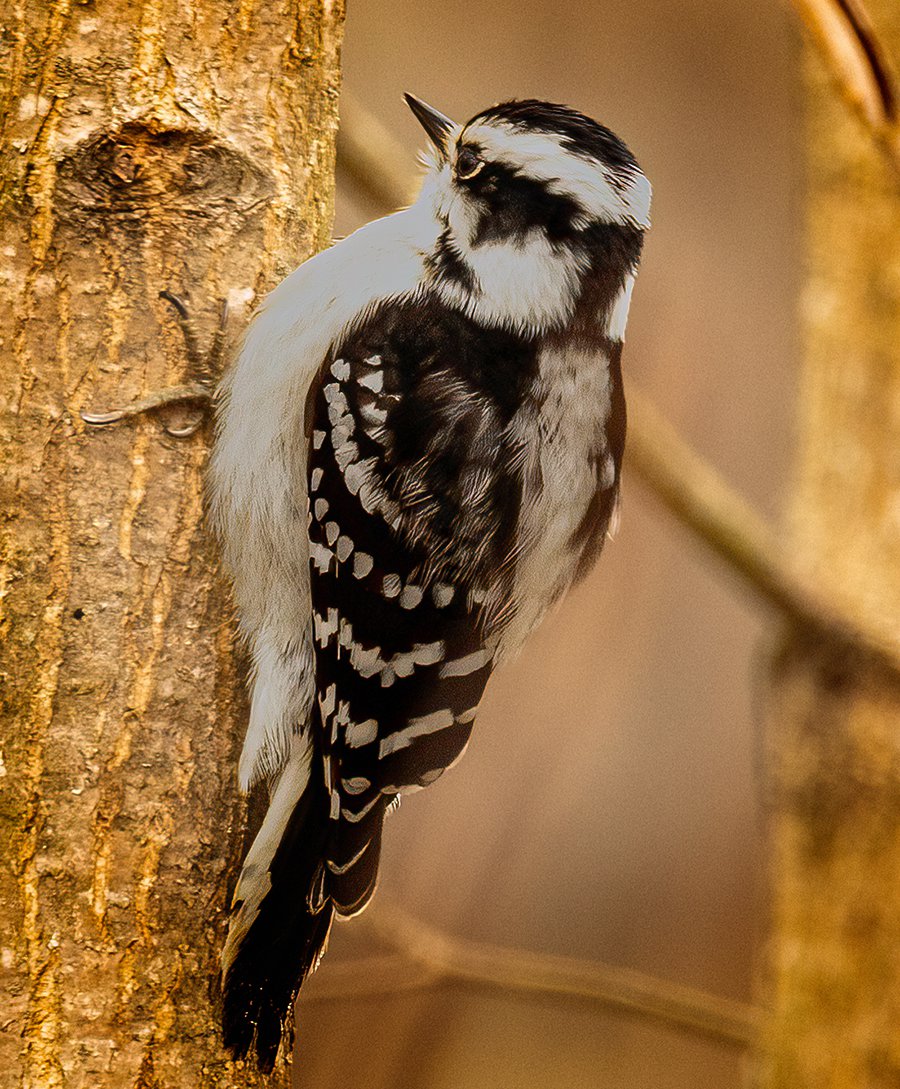Observing Woodpeckers in Florida: Species Diversity and Circulation
Wiki Article
Woodpeckers: A Comprehensive Overview to Comprehending These Special Birds
Woodpeckers, with their unique behaviors and physical characteristics, have long astounded the inquisitiveness of ornithologists and nature lovers alike. From their rhythmic drumming resembling with the woods to their remarkable adaptations for scaling tree trunks with simplicity, these birds provide a fascinating research in bird biology. Nevertheless, what truly establishes woodpeckers apart is not just their striking look but additionally their crucial role in keeping the fragile balance of ecological communities. As we explore the detailed anatomy, varied species, and eco-friendly importance of woodpeckers, a much deeper recognition for these unique birds and the secrets they hold unfolds.
Woodpeckers' Drumming Actions
Woodpeckers show a balanced and specific drumming actions that offers numerous essential functions in their day-to-day lives. This actions is mostly connected with communication, territory protection, and foraging. The distinctive drumming noise is developed by the rapid pecking of their beaks versus difficult surface areas such as tree trunks, branches, and even metal things.Interaction is a vital element of woodpecker behavior, and drumming plays a significant duty in this process. Woodpeckers use drumming to develop their existence, attract friends, and preserve contact with their partners and offspring. The regularity, intensity, and period of drumming sequences convey details messages to other woodpeckers in the location.
In addition to communication, woodpeckers use drumming actions for area protection. Woodpeckers in Florida. The loud and repeated drumming acts as an alerting to possible intruders, signaling that the area is already claimed. By establishing their area with drumming, woodpeckers lower the likelihood of problems over beneficial resources such as food and nesting websites
Additionally, woodpeckers also employ drumming as a foraging method. The rhythmic pecking helps them locate bugs concealing underneath the bark of trees by creating vibrations that interrupt the prey's cover-up. This actions showcases the versatility and ingenuity of woodpeckers in utilizing their drumming skills for numerous important objectives.
One-of-a-kind Adaptations for Tree Climbing
Having understood the art of drumming to communicate, defend territory, and forage, woodpeckers have developed one-of-a-kind adjustments that promote their remarkable climbing up capacities in their arboreal environments. Woodpeckers have zygodactyl feet, with 2 toes aiming onward and 2 toes directing backward. These tail feathers offer stability and balance, enabling woodpeckers to maneuver up tree trunks with accuracy and dexterity.In addition, woodpeckers have effective neck muscle mass and an click now one-of-a-kind head framework that aid in their climbing capacities. Their solid neck muscle mass enable them to rapidly eat tree bark without experiencing whiplash, while their thick head and little brain act as shock absorbers, shielding them from the influence of repeated drumming. These adaptations jointly allow woodpeckers to navigate the vertical world of trees why not look here with efficiency and poise.

Function of Woodpeckers in Ecological Communities
Playing a critical duty in woodland environments, woodpeckers contribute significantly to the equilibrium and wellness of their environments with their distinct habits and interactions with other types. One of the vital ecological functions of woodpeckers is their duty in managing insect populations. By foraging for bugs under the bark of trees, woodpeckers aid manage bug populations, stopping outbreaks that can harm the overall wellness of the forest. Additionally, woodpeckers create cavities in trees that act as critical nesting websites for a range of various other bird species, promoting biodiversity within the ecosystem.Moreover, the drumming and articulations of woodpeckers play a vital function in interaction and region facility. These noises not only offer to draw in companions but additionally aid specify limits between different woodpecker regions, minimizing disputes and promoting an unified coexistence within the forest community. Overall, the presence of woodpeckers in forest ecological communities highlights their significance as keystone varieties, influencing the characteristics and working of these environments in diverse ways.
Composition: Specialized Beaks and Feet
In the intricate internet of woodland communities, the specialized beaks and feet of woodpeckers are essential adaptations that allow them to satisfy their vital ecological functions. Woodpeckers have unique physiological attributes that are specifically created to assist them in their foraging and nesting behaviors.The most distinctive function of woodpeckers is their solid, chisel-shaped beaks. These beaks are flawlessly adapted for boring right into timber to reveal insects, larvae, and sap concealed under the bark of trees. The solid muscle mass and tough structure of their beaks allow woodpeckers to peck at a rate of as much as 20 times per secondly without creating damages to their heads.
Additionally, woodpeckers have specialized feet that help in their acrobatic climbing up abilities. Their feet have two toes directing ahead and 2 toes aiming in reverse, giving a strong grip on vertical surface areas (Woodpeckers in Florida). This one-of-a-kind foot setup, along with stiff tail feathers that act as a supportive prop, allows woodpeckers to cling to tree trunks and branches with ease while they look for food or excavate nesting tooth cavities
Woodpecker Types Diversity
Woodpeckers are a diverse group of birds located across various ecosystems worldwide, with over 200 well-known types exhibiting adaptations to various environments. Woodpeckers have actually progressed to occupy an array of atmospheres, from forests and timberlands to grasslands and deserts, each presenting unique obstacles that have affected the evolution of unique woodpecker varieties.These adaptations go to website allow woodpeckers to forage effectively in their corresponding habitats, lowering competitors amongst types and advertising particular niche distinction. Additionally, geographic isolation and historical aspects have actually played a role in forming the distribution and diversity of woodpecker species, leading to the large variety of specialized adjustments seen in these remarkable birds.
:max_bytes(150000):strip_icc()/GettyImages-1094628502-a831e9c1be004c05b057f488ff819127.jpg)
Verdict
In verdict, woodpeckers are interesting birds that exhibit special drumming behavior, specialized adaptations for tree climbing, and play vital functions in ecosystems. With a diverse array of woodpecker species discovered worldwide, these birds are essential for preserving the wellness and balance of woodlands and timberlands.Report this wiki page